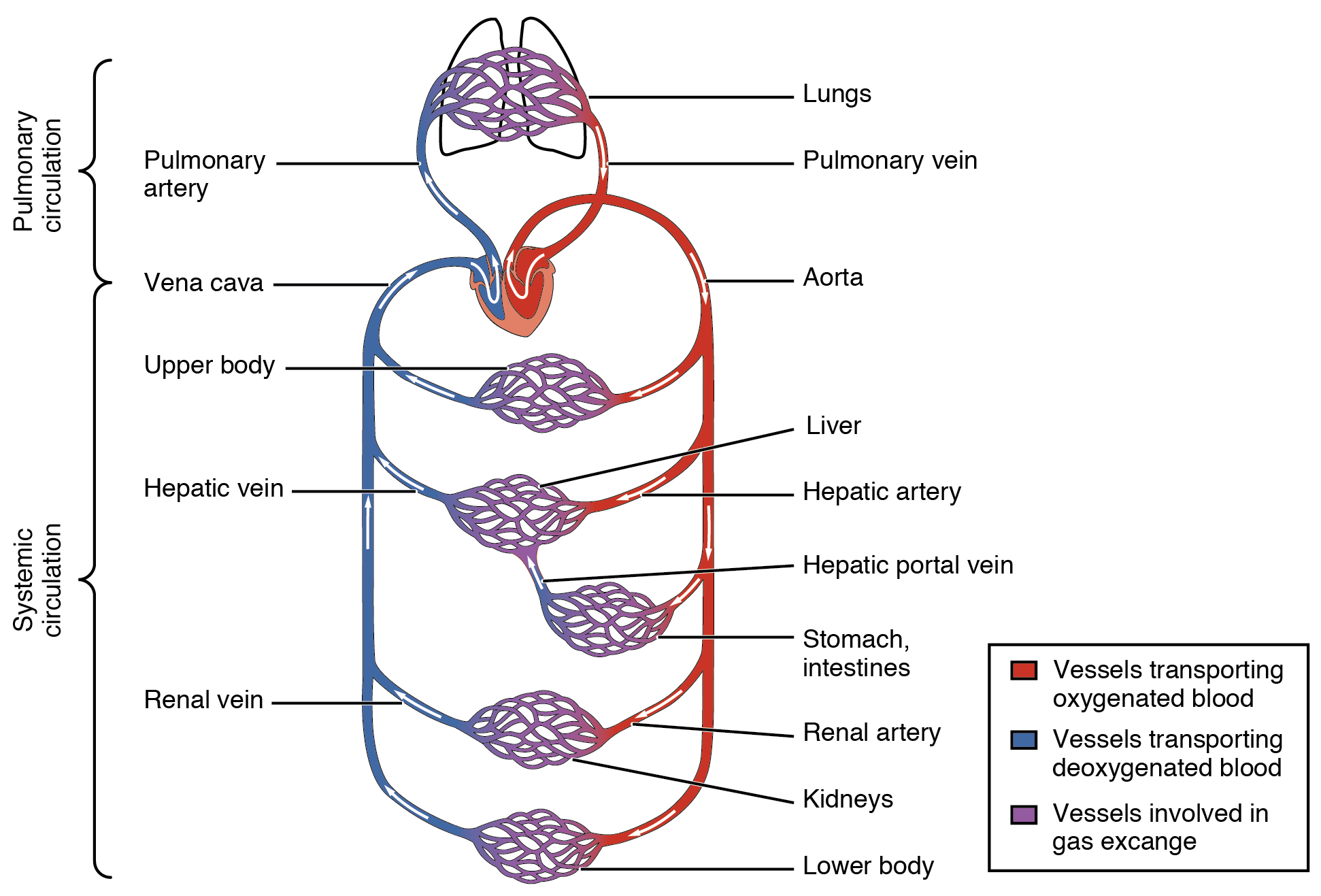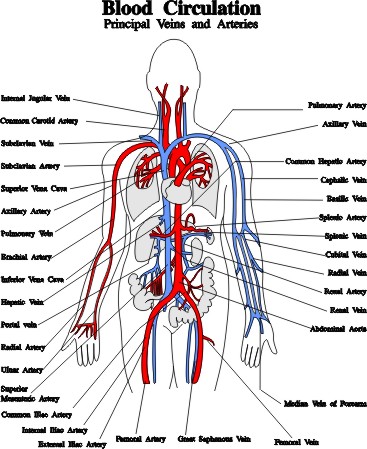Which Best Describes the Blood Flowing in an Artery
Exercise decreases capacitance of the vessel C. In this educational lesson we learn about the blood flow order through the human heart in 14 easy steps from the superior and inferior vena cava to the atria and ventricles.

Structure And Function Of Blood Vessels Anatomy And Physiology
It moves toward the heart.

. C Blood pressure is lower in arteries than in veins. Large veins--Site where blood pressure is lowest. JOHN BAVOSIScience Photo LibraryGetty Images.
Question Which of the following best describes arteries. Which statement best describes arteries. When measuring blood pressure with a sphygmomanometer which of the following best describes when blood flow in the brachial artery is turbulent.
An efferent blood vessel from the heart conveying blood away from the heart regardless of oxygenation status vena cava. E Both arteries and veins are under pressure. An artery is an elastic blood vessel that transports blood away from the heart.
It contains no red blood cells. Q 40 cms x 314x 02cm². Blood flows through arteries largely because it is under.
Only large arteries are lined with endothelium D. Exercise causes arteriole vasodilatation. When measuring blood pressure using a sphygmomanometer turbulent blood flow is seen to occur at the time when the blood cuff pressure is greater than the diastolic pressure in the brachial artery but less than the systolic pressure.
B Veins contain valves and arteries do not. Capillaries--Site where exchanges of food and gases are made. Which statement best describes arteries.
Strong rigid vessels that carry blood under high pressure D. Strong elastic vessels that carry oxigenated blood. C All contain valves to prevent the backflow of blood.
Either of the two large veins that take oxygen depleted blood from the upper body and lower body and return it to the right atrium of the heart. B All carry blood away from the heart. Q 40cms x 01256cm²s.
The flow rate is 5024 cm³s. Arterial plaque changes the direction of blood flow which forces oxygenated blood to the heart. During normal quiet inspiration the diaphragm _.
A For an artery and vein of the same diameter the vein would have a thicker wall. Arteries are defined as blood vessels that carry blood away from the heart. Fragile vessels that are prone to rupture.
In the artery the blood is flowing away from the heart and is under more pressure because it is being pumped strongly. 2 and 4 are correct Blood is usually in laminar flow in the vessels. Large veins--Site where the blood volume is greatest.
Now we use the Q V x A formula but we have to remember that the area of an artery is circular so we replace the A with the formula π x r². All carry oxygenated blood to the heart C. It is oxygen rich B.
Now with the flow rate Q we can determine the volume for this we use the formula V Q x t. Exercise increases resistance B. Arterial plaque clogs the arteries limiting or stopping blood flow.
Arteries are the blood vessels that carry oxygen-rich blood to the bodys tissues. Which of the following best describes the effects of exercise on blood flow in a non-diseased vessel. The pulmonary veins are included in the diagram because like arteries they carry oxygenated blood.
Pathway of Blood Through the Heart. All carry blood away from the heart B. Arterial plaque changes the size of blood cells which prevents blood from flowing in the arteries.
Exercise decreases blood flow D. Arteries are components of the cardiovascular system. Capillaries--Site where the velocity of blood flow is slowest.
This is the opposite function of veins which transport blood to the heart. D Only large arteries are lined with endothelium. A All carry oxygenated blood to the heart.
Come also learn with us the hearts anatomy including where deoxygenated and oxygenated blood flow in the superior vena cava inferior vena cava atrium. D When empty an artery is more likely to be collapsed flattened than a vein. It is oxygen rich B.
Ventricular contraction ejects blood into the major arteries resulting in flow from regions of higher pressure to regions of lower pressure as blood encounters smaller arteries and arterioles then capillaries then the venules and veins of the venous system. The blood in the vein is. Correct answer to the question Which best describes the blood flowing in an artery.
Correct answer to the question Which best describes the blood flowing in an artery. A when pressure in the brachial artery is greater than in the blood pressure cuff and greater than the diastolic pressure B when pressure in the blood pressure cuff is less than the diastolic pressure. Arterioles--Site where resistance to blood flow is greatest.
Thin elastic vessels that transport blood under low pressure C. This leads to _ intrapleural intrathoracic pressure and _ intraalveolar. All contain values to prevent back flow of blood 2.
It is oxygen poor. This is the period between hearing the first Korotkoff sound which. Pin On Body B Arteries have a smooth muscle.
Elastic vessels that connect arterioles and venules E. Large arteries--Site where the velocity of blood flow is fastest.

Solved Question 20 Which Statement Best Describes Arteries Chegg Com

Blood Vessels Arteries Capillaries Veins Vena Cava Central Veins Lhsc

Solved Select The Option That Best Describes The Order Of Chegg Com
Comments
Post a Comment